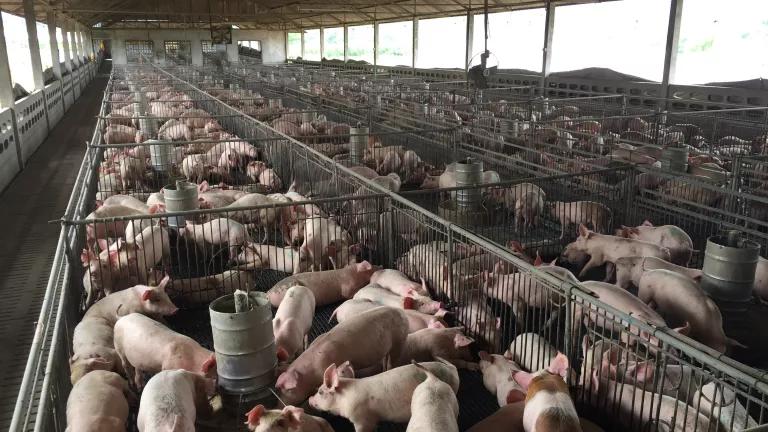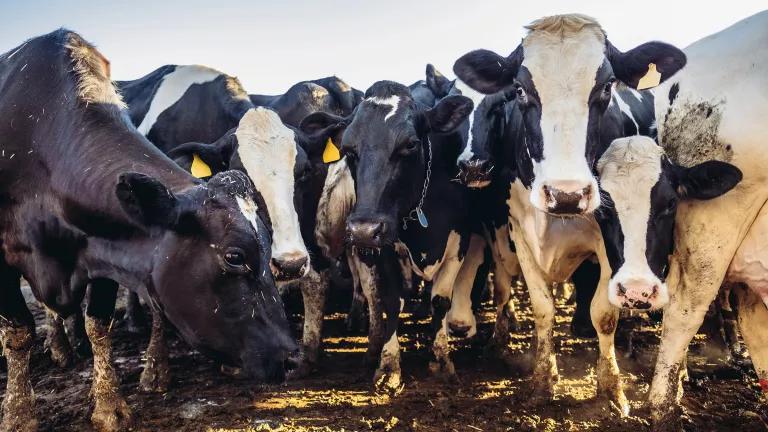
Socially Responsible Agricultural Project
Authored with D. Lee Miller, Duke Law School, Environmental Law and Policy Clinic, and Gregory Muren
Corporate livestock facilities, known as concentrated animal feeding operations (or CAFOs), can threaten the health of communities and pollute our air and water. Manure from CAFOs contains more than 150 pathogens that have the potential to contaminate water supplies, while fumes and particulate matter elevate rates of asthma, lung disease, and bronchitis among farm workers and people living nearby. Nitrates from animal manure poison drinking water sources and contribute to epic dead zones in sensitive aquatic habitats. To confine large numbers of animals in close proximity, many companies compensate for filthy conditions by using routine antibiotic regimens, and this, in turn, fuels the global crisis of antibiotic resistance.
CAFOs are theoretically regulated by the EPA, under the Clean Water Act. However, a decade of NRDC research reveals that the EPA has left these health threats largely unmonitored. In fact, the EPA lacks basic information about most CAFOs, including their location, how many animals they confine, how much waste they produce, and how they dispose of that waste. The NRDC is encouraging states to step into the federal gap, using an NRDC designed permit to monitor and regulate CAFOs that endanger the health of their citizens and environment.
Related Content

Big Ag Is Hiding in Plain Sight and It’s Making Us Sick

Freshwater Harmful Algal Blooms 101





